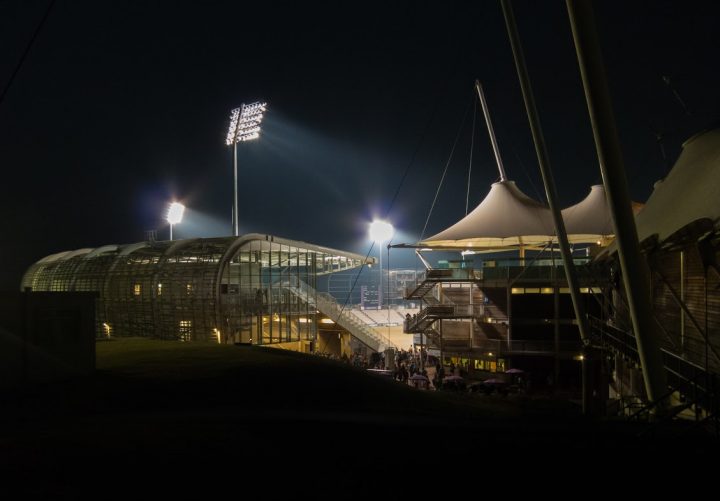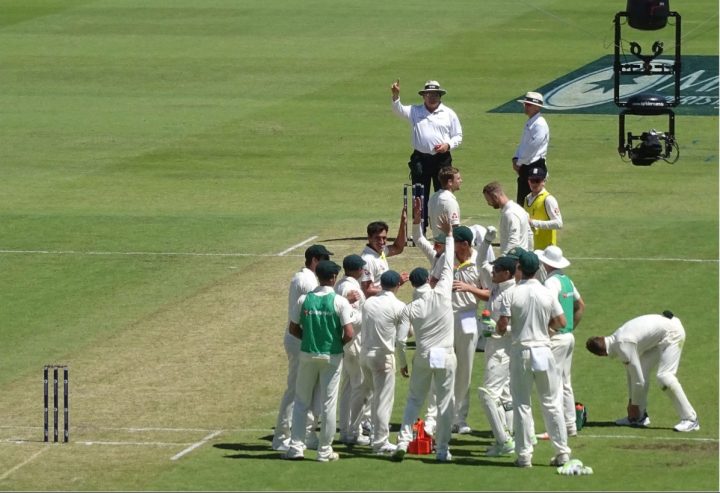Do you like the idea of day/night test cricket, under floodlights?
The concept is now firmly on the agenda again, after the ICC last week announced the latest changes to its playing conditions. They included, for the first time, a clause which allows countries to schedule day/night tests. From an official point of view, it’s now all systems go.
Much about the idea is very attractive. Around the world, test attendance is in decline, and even in this country, there are often plenty of empty seats when the less glamorous nations are touring.
Something needs to be done not just to make watching test cricket in the flesh more attractive, but feasible and practical to do, in the context of people’s busy everyday lives.
If you were to design a sporting format which made it very difficult for people to attend, you couldn’t do better than come up with test cricket in its current form. It last for five whole days, and takes place in the daytime, mainly during the week.
The success of T20 in getting bums on seats – and weekday football – shows the difference you make if you stage the event mainly in the evening, when people can go after work.
In theory, day/night tests in England could involve playing hours from 3pm till 10pm. As a punter, you could just leave work a little early, or skip the first session and go down to the ground after you clock off, and still get to see most of the day.
And if you weren’t able to be there in person, it would be much easier to watch live on TV. Imagine the difference to audience figures, and the profile of cricket as a television spectacle. It would become primetime.
So far, so good. But cricket has a funny way of ruining attractive theories when you try to put them into practice.
One problem is that here in England, floodlights are crap. In Australia or South Africa, the lights are dramatic and exciting – a blaze of glitzy illumination searing from the black skies.
In England, floodlights resemble a couple of dingy bike lamps on failing batteries, whose dull glow barely peeks out of the twilight. You can hardly tell the difference when they turn them on.
That’s partly because the English grounds, with their typical homespun approach, seem to have invested in the most low-budget, apologetic floodlights on the market. But it’s also because it simply doesn’t get dark enough in England during midsummer.
Playing under lights would probably work better in May or September, but then it would be too cold and damp. Who wants to sit there shivering over a pint of lager, for hours on end, when you could be snuggled up at home?
The other practical issues have still to be solved, despite years of attempts. Chiefly, the colour of the ball. Red balls can’t be seen under lights. White balls get dirty too quickly, and would necessitate playing test cricket in coloured clothes. And does anyone, frankly, like that idea?
The MCC have experimented with pink and orange balls, without much success. So far, each colour gets too soft, too quickly, and neither are perfect from a visibility point of view.
And there’s the complication posed by climatic changes. In England, as evening sets in, the air, temperature and moisture all change, which affect both the pitch and the ball’s behaviour.
As it is, ODIs under lights are already a lottery, and few sides enjoy chasing a target in the dark. How much more of a lottery would it be in a full test match, when the subtleties of changing conditions are even more complex and influential?
Conceivably, the whole game would change – the balance of power, and relationship between bat and ball, would be affected in new and unpredictable ways over the course of a day, as afternoon became night.
Sometimes that might prove interesting and intriguing, but equally it could just become a bit of a mess. Teams would soon figure out tactics, probably cynical ones, to make these new factors work to their advantage – perhaps by delaying a declaration till dusk, for example, or selecting a differently balanced side.
So overall, as a punter, it seems to me that day/night test cricket, in England at least, is a non-starter. Which is a shame. But what do you think?
Maxie Allen









I cant tell at the moment which standards to uphold and which standards to give up in order to make d/n test cricket viable. The boards & broadcasters mantra “audience is dwindling and the more people watch the more money goes into cricket” is not wrong but wouldnt that lead to d/n Ashes one day?
“That’s partly because the English grounds, with their typical homespun approach, seem to have invested in the most low-budget, apologetic floodlights on the market. But it’s also because it simply doesn’t get dark enough in England during midsummer.”
It’s also to do with planning laws. A lot of stadiums have no housing close by – places like the London and Sydney Olympic stadiums have whole complexes surrounding them – but our cricket grounds tend to be wedged into often densely populated areas. I know Lord’s had a lot of problems getting agreement from their neighbours about lights, which is why they’re so small and unobtrusive. No one wants floodlights blazing through their sitting-room windows.
I think d/n test are an exciting opportunity. Yeas they need to make sure the light and ball issues are sorted. However after that I think that the changing conditions are something that tens will need to learn to cope with. I don’t think that pick a side to deal with this or judicious timing of declaration can be called cynical. In the days of uncovered pitches it was not unheard of foe a side to declare after a rain break and make the most of a drying pitch (if you had one D Underwood why wouldn’t you).
Day night Test cricket is not needed or wanted in England. It will introduce to many variables into the game, attendances are fine as they are. Maybe we could push the start time back to 12pm, so more people can watch the last session on TV but that’s about the only change I would make.
However it is very much needed in other parts of the world and something I would like to see trialed, just go for it. The ball issues will sort themselves out, if they don’t after say a 2 year period, we scrap it.